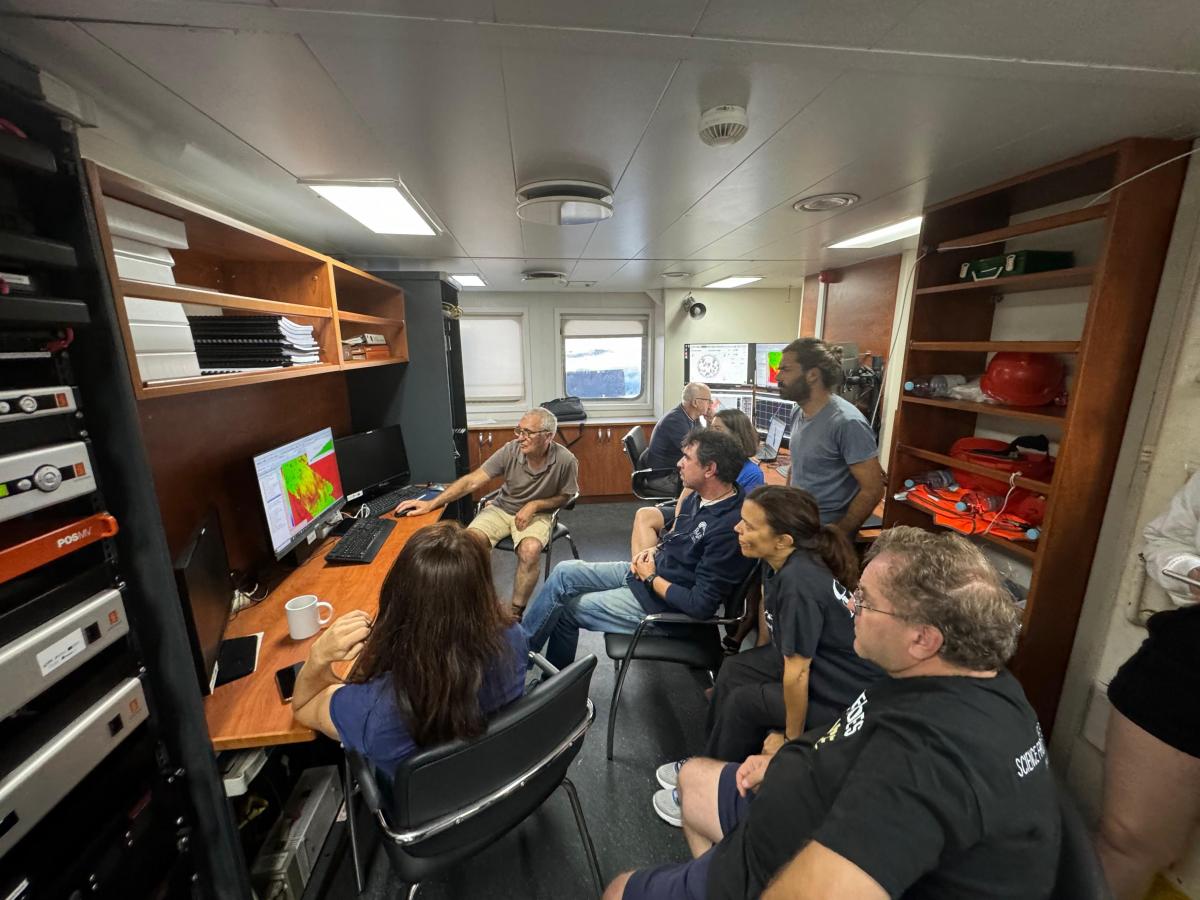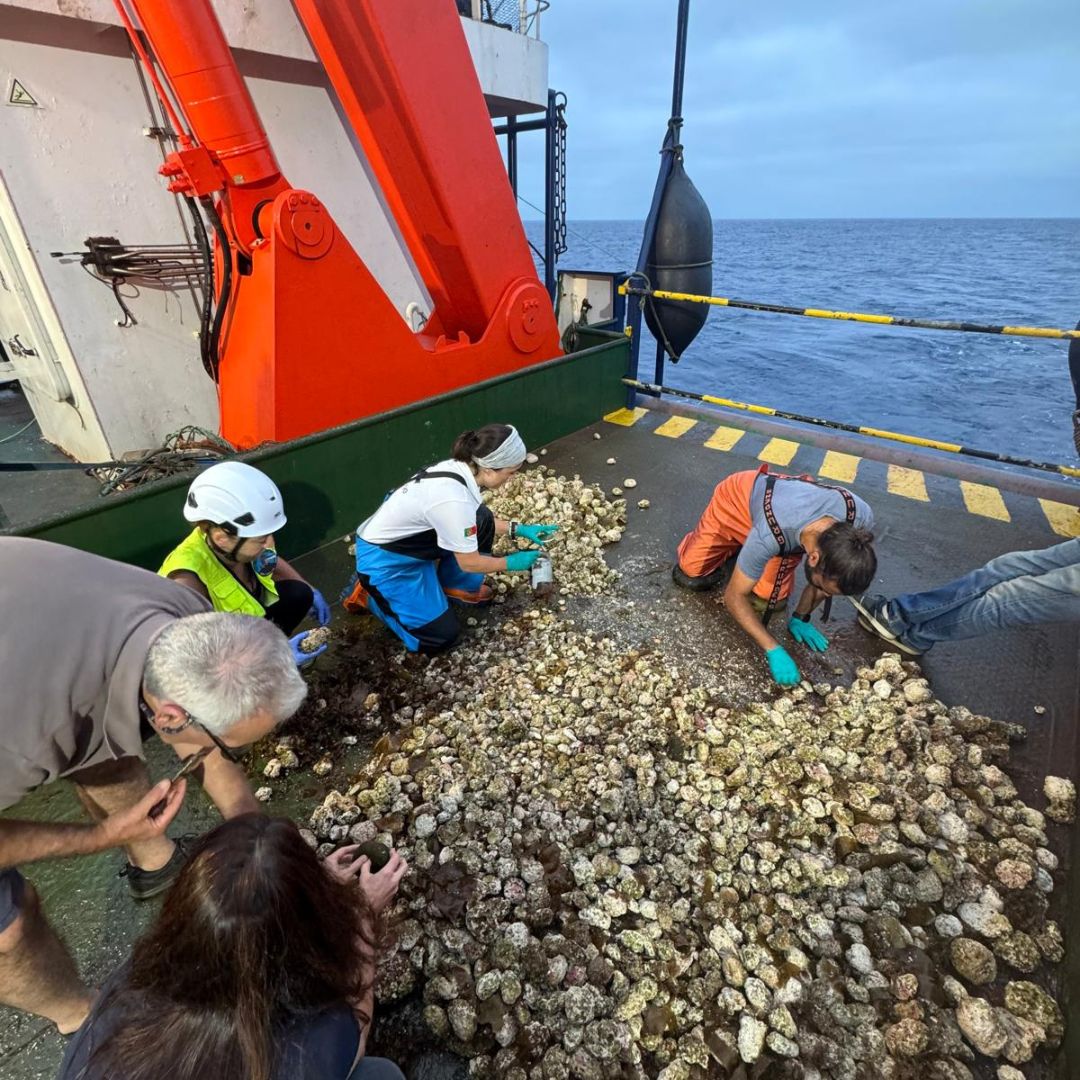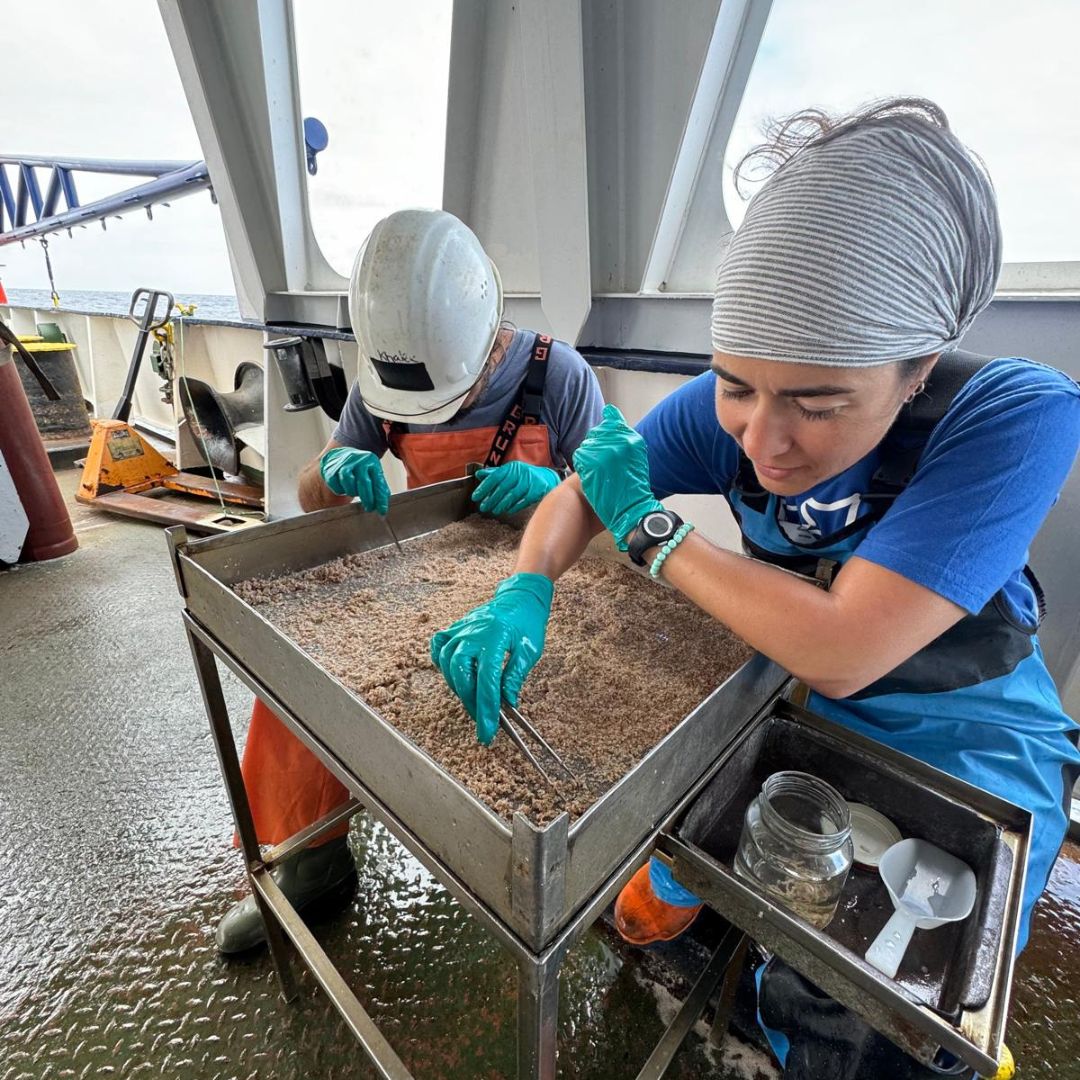João Pequeno in the AMP Oceanographic Campaign
The first stage of the oceanographic mission of the Madeira Ocean Marine Protected Areas project has come to an end. Among the researchers who went on board the ship ‘Mário Ruivo’ was MARE researcher João Pequeno.
 With a length of 75.6 metres and a beam of 14.8 metres, the IPMA ship left Funchal on August 6, equipped with state-of-the-art technology, essential for identifying biodiversity and characterising the geological nature of the seabed. Throughout its voyage, work was carried out in the areas of marine geology, physical oceanography and biogeochemistry, with the aim of identifying new areas of high interest for the conservation of Madeira's biodiversity and building the scientific basis to support the planning and management of current and future classified areas.
With a length of 75.6 metres and a beam of 14.8 metres, the IPMA ship left Funchal on August 6, equipped with state-of-the-art technology, essential for identifying biodiversity and characterising the geological nature of the seabed. Throughout its voyage, work was carried out in the areas of marine geology, physical oceanography and biogeochemistry, with the aim of identifying new areas of high interest for the conservation of Madeira's biodiversity and building the scientific basis to support the planning and management of current and future classified areas.

João Pequeno, a researcher at MARE, was part of the multidisciplinary team involved in this campaign: ‘I've never been on the high seas before. It was a unique experience and a huge opportunity. My job was to help out a little bit with everything, because I didn't come with a set objective. I mainly wanted to learn and understand how I could help in this strategy of implementing marine protected areas,’ the researcher told Sol newspaper.
Using a SeaSpyder video camera system and a remote underwater vehicle (ROV), various species of algae, echinoderms, fish and sharks were observed. Water and soil sediment samples were also collected, which will be used to determine nutrients, identify phytoplankton, environmental DNA and also to calibrate the sensors installed in a CTD, equipment that allows vertical profiles to be made of temperature, salinity, pH, dissolved oxygen, chlorophyll and dissolved organic matter.

João Pequeno explains the importance of collecting this information: ‘What the eyes can't see, the heart can't feel, right? It's a bit like what happens to people. It's very important to preserve the oceans, that's not news to anyone. However, it's important to know and preserve. That's why these campaigns are essential. They will allow us to know in depth which areas make sense to protect and what level of protection should be implemented. This also takes into account the uses we make of these areas and the ecosystem services they provide.’ ‘We need robust scientific data to know how to prevent this in the future,’ he concludes.
Once this first phase is over, the Ministry of Economy said in a statement that the second phase of this campaign is scheduled for the first half of 2025, in the Azores sub-region. The project is part of the national commitment to establish a network of marine protected areas representing 30 per cent of the national marine space by 2030.
